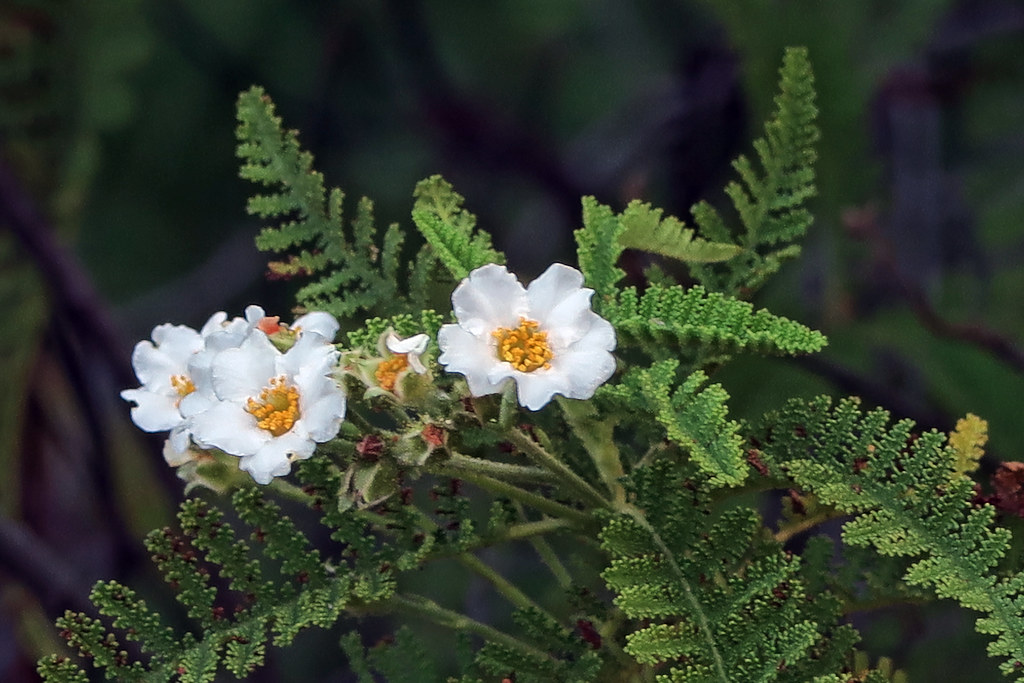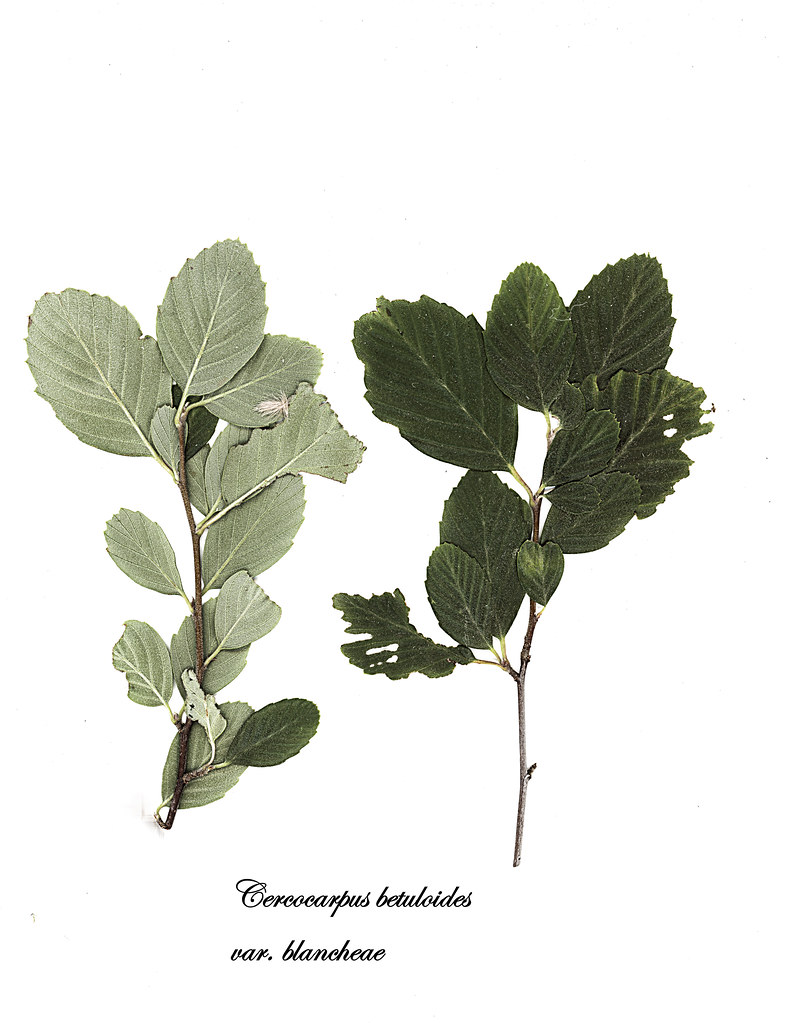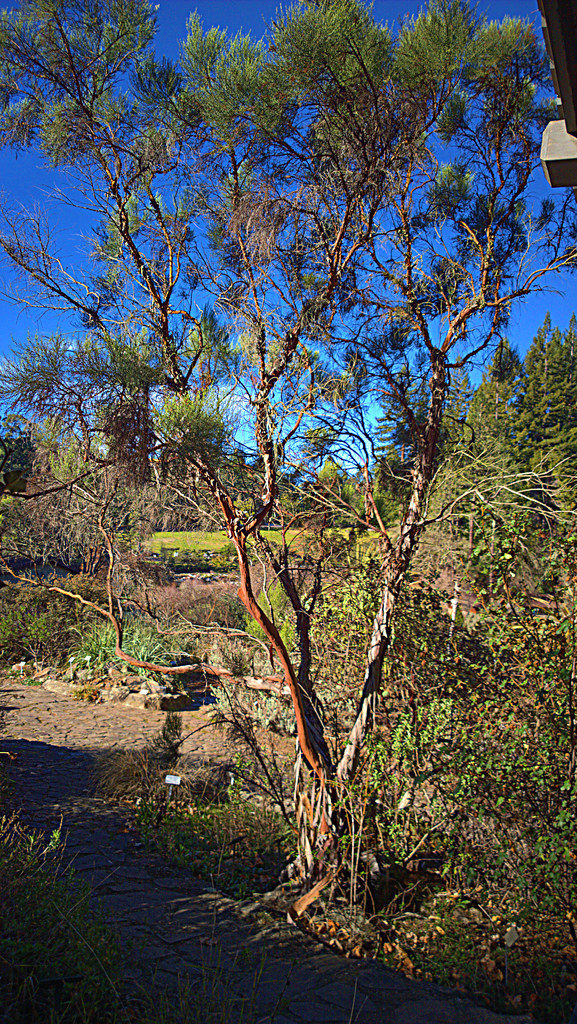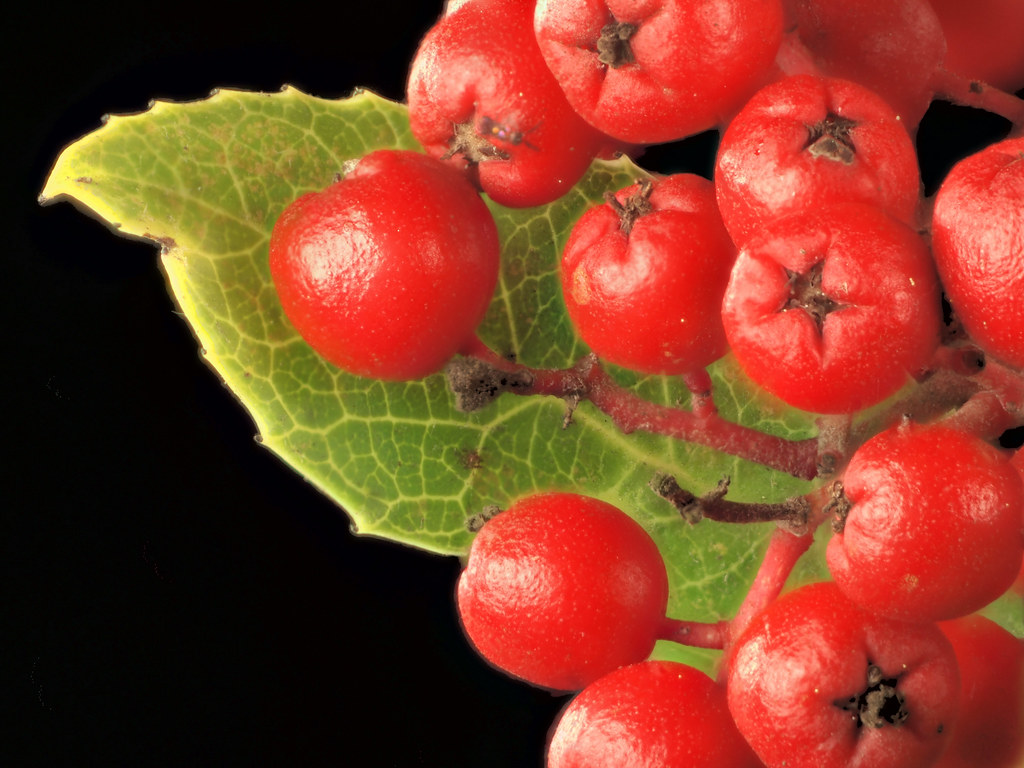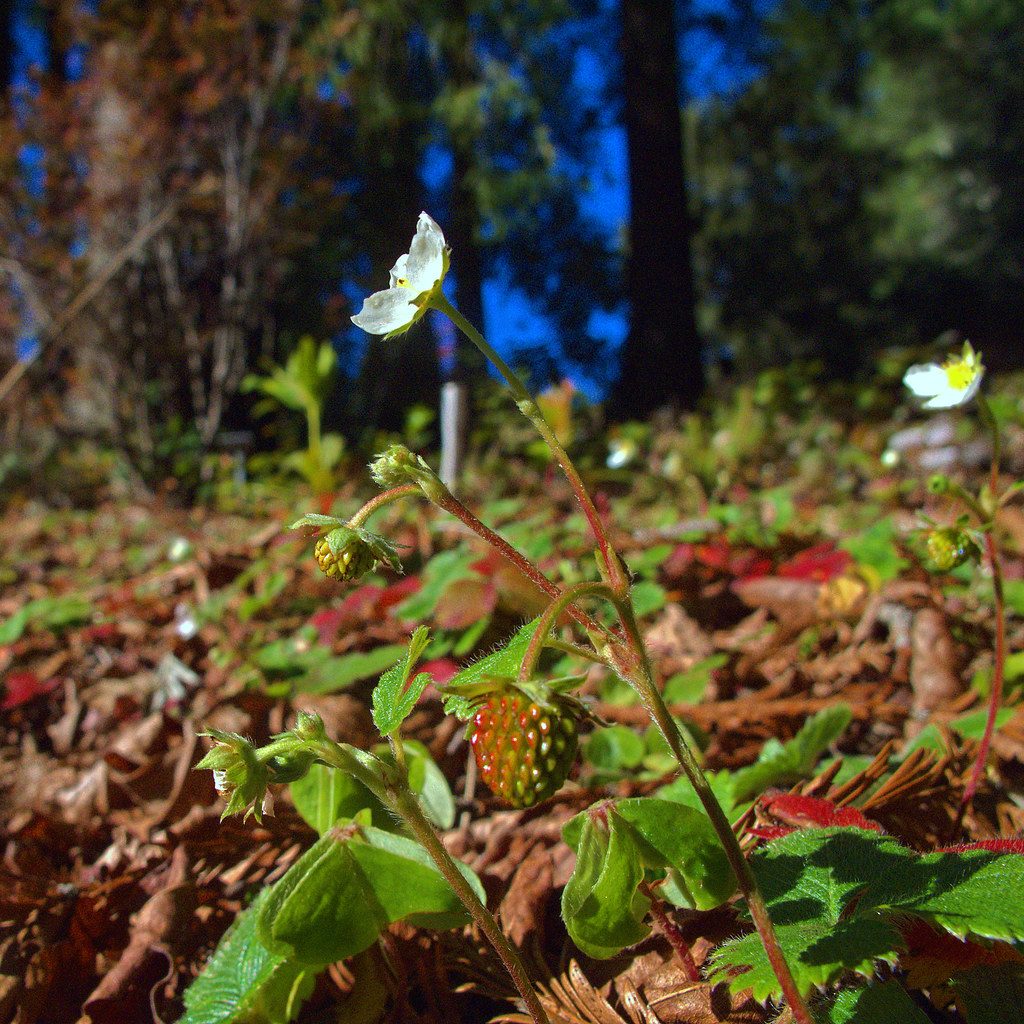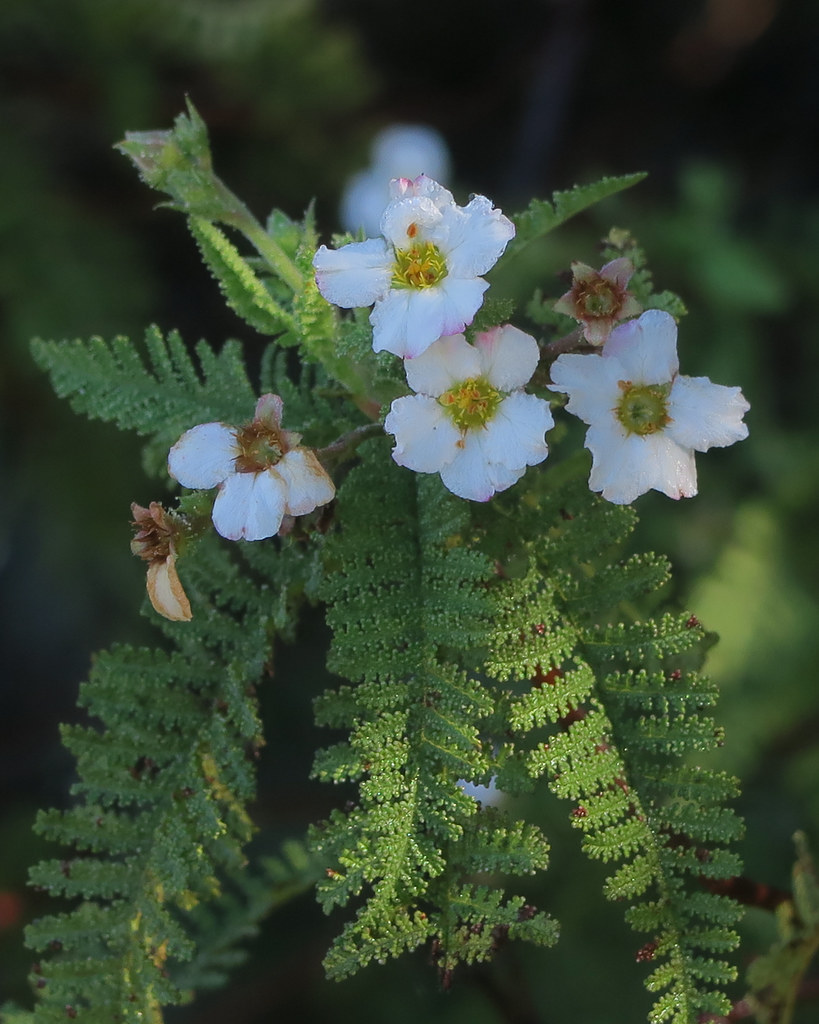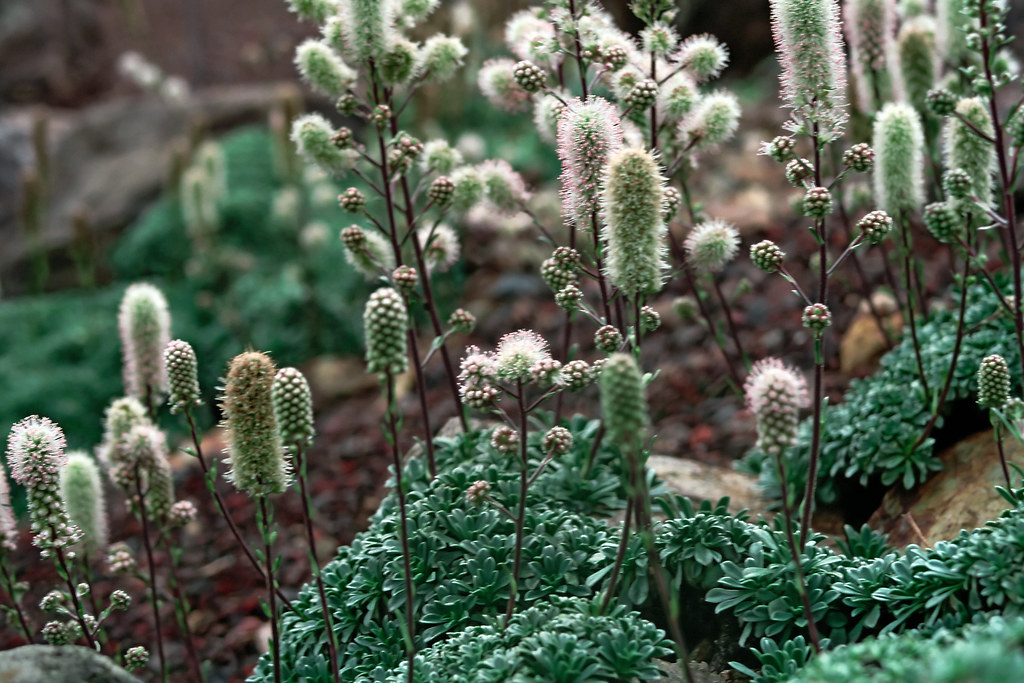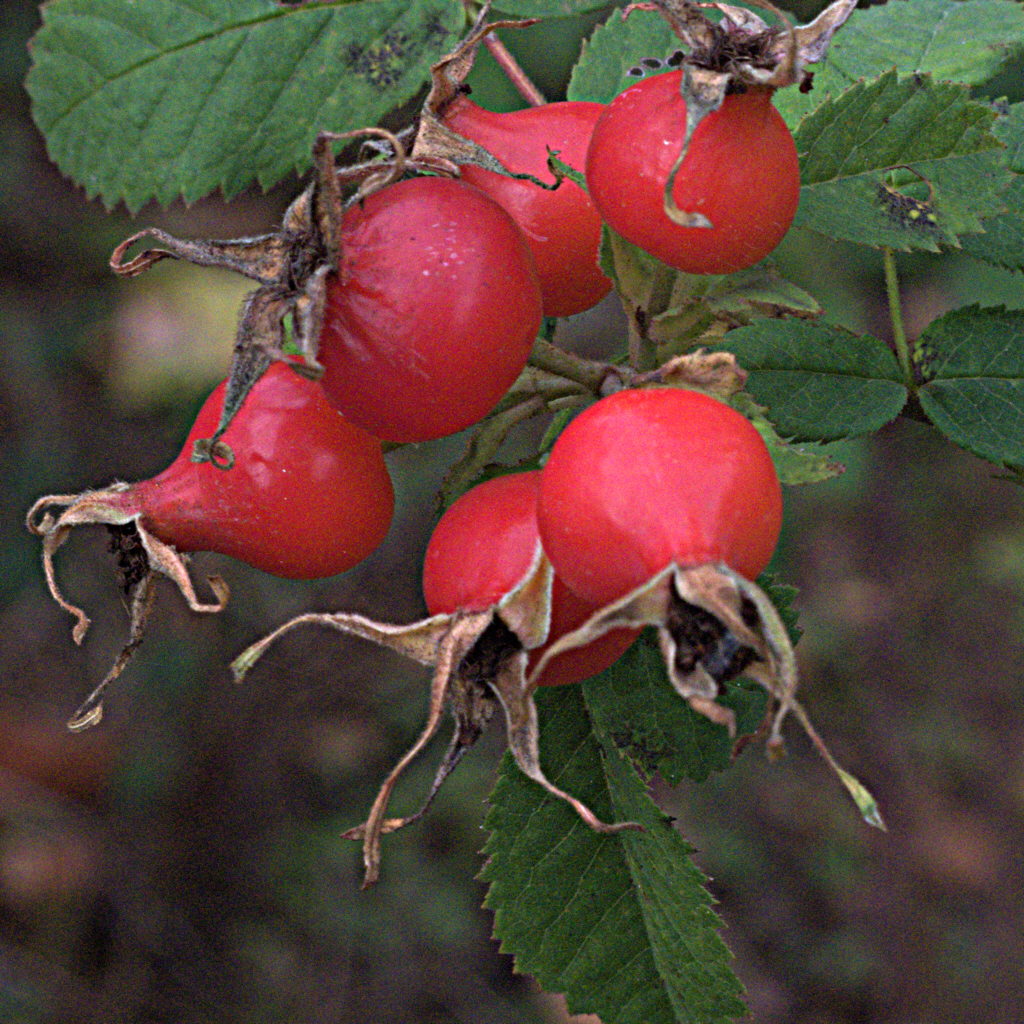#Taxonomy:family=Rosaceae
Video
n1_w1150 by Biodiversity Heritage Library
Via Flickr:
Curtis's botanical magazine.. London ; New York [etc.] :Academic Press [etc.]. biodiversitylibrary.org/page/485389
#Botanical illustration#Botany#Periodicals#Pictorial works#Plants#Ornamental#Missouri Botanical Garden#Peter H. Raven Library#bhl:page=485389#dc:identifier=http://biodiversitylibrary.org/page/485389#BHLCurtis#taxonomy:family=Rosaceae#geo:country=Japan#flickr#scientific illustration#crataegus glabra#photinia glabra#Japanese photinia#photinia#Red-leaf Photinia
3 notes
·
View notes
Video
J20171026-0022—Chamaebatia australis—RPBG by John Rusk
Via Flickr:
Chamaebatia australis—southern mountain misery. It is included in the CNPS Inventory of Rare and Endangered Plants on list 4.2 (limited distribution). Threatened by agriculture throughout its limited range in San Diego County and Northern Baja California. Photographed at Regional Parks Botanic Garden located in Tilden Regional Park near Berkeley, CA.
#ebparksok#taxonomy:kingdom=Plantae#Plantae#taxonomy:subkingdom=Tracheophyta#Tracheophyta#taxonomy:phylum=Magnoliophyta#Magnoliophyta#taxonomy:class=Magnoliopsida#Magnoliopsida#taxonomy:order=Rosales#Rosales#taxonomy:family=Rosaceae#Rosaceae#taxonomy:genus=Chamaebatia#Chamaebatia#taxonomy:species=australis#taxonomy:binomial=Chamaebatia australis#southern mountain misery#Chamaebatia australis#taxonomy:common=southern mountain misery
2 notes
·
View notes
Video
n380_w1150 by Biodiversity Heritage Library
Via Flickr:
A guide to the wild flowers.. New York,F. A. Stokes[1899]. biodiversitylibrary.org/page/40764791
#United States#Wild flowers#New York Botanical Garden#LuEsther T. Mertz Library#bhl:page=40764791#dc:identifier=https://biodiversitylibrary.org/page/40764791#artist:name=Marian Ellis Rowan#Merian Ellis Rowan#HerNaturalHistory#Taxonomy:binomial=Amelanchier canadensis#Taxonomy:common=Canadian serviceberry#Taxonomy:family=Rosaceae#Taxonomy:common=Shad-bush#Serviceberry#WomenInScience#flickr#amelanchier canadensis#bilberry#canadian serviceberry#chuckle-berry#currant-tree#juneberry#shad-blow serviceberry#shad-blow#shadbush#shadbush serviceberry#sugarplum#thicket serviceberry
0 notes
Video
E20170909-0001—Cercocarpus betuloides var blancheae —RPBG by John Rusk
Via Flickr:
Cercocarpus betuloides var. blancheae—island mountain mahogany. The variety is included in the CNPS Inventory of Rare and Endangered Plants on list 4.3 (limited distribution). It grows only in the northern Channel Islands and, perhaps, adjacent mainland areas. The genus name translates roughly to "seed with a tail" while the species epitaph refers to its birch-like leaves. The tree that provided the leaves scanned grows at Regional Parks Botanic Garden located in Tilden Regional Park near Berkeley CA.
#ebparksok#taxonomy:kingdom=Plantae#Plantae#taxonomy:subkingdom=Tracheophyta#Tracheophyta#taxonomy:phylum=Magnoliophyta#Magnoliophyta#taxonomy:class=Magnoliopsida#Magnoliopsida#taxonomy:order=Rosales#Rosales#taxonomy:family=Rosaceae#Rosaceae#taxonomy:genus=Cercocarpus#Cercocarpus#taxonomy:species=betuloides#taxonomy:binomial=Cercocarpus betuloides#taxonomy:trinomial=Cercocarpus betuloides blancheae#Cercocarpus betuloides blancheae#island mountain-mahogany#taxonomy:common=island mountain-mahogany
1 note
·
View note
Video
N20171228-0008—Adenostoma sparsifolium—RPBG by John Rusk
Via Flickr:
Adenostoma sparsifolium—red shank. The species is part of the chaparral from San Luis Obispo County to near the extreme end of the California Floristic Province in Baja California. It forms solid stands at some locations in the Santa Monica and Santa Rosa mountains. Red shank typically speads vegetatively as seeds are often not viable. Stumps sprout readily after fires. These sprouts provide food for rabbits and other small creatures. Photographed at Regional Parks Botanic Garden located in Tilden Regional Park near Berkeley, CA.
#ebparksok#taxonomy:kingdom=Plantae#Plantae#taxonomy:subkingdom=Tracheophyta#Tracheophyta#taxonomy:phylum=Magnoliophyta#Magnoliophyta#taxonomy:class=Magnoliopsida#Magnoliopsida#taxonomy:order=Rosales#Rosales#taxonomy:family=Rosaceae#Rosaceae#taxonomy:genus=Adenostoma#Adenostoma#taxonomy:species=sparsifolium#taxonomy:binomial=Adenostoma sparsifolium#Adenostoma sparsifolium#Redshanks#Palo amarillo#Ribbonwood#taxonomy:common=Redshanks#taxonomy:common=Palo amarillo#taxonomy:common=Ribbonwood
1 note
·
View note
Video
2014-11-15-15.52.59 ZS PMax Heteromeles arbutifolia-1 by John Rusk
Via Flickr:
Heteromeles arbutifolia—Christmas berry. Christmas berry is important as one of the first California plants to gain legal protection. It was subject of a 1920s law aimed at reining in the unrestricted overharvesting of berry-bearing branches during Christmas season. Willis L. Jepson, showing the prejudices of his time, wrote in the _Flora of California_, "In the years of 1911 and 1912 and thereabouts most of the stock for the San Francisco Market came from the region of Tuolumne County. With proper care of the shrubs the quality of the berries as a rule improves as a result of harvest pruning, but the Tuolumne region was so ill-treated by the Italian gatherers that the district ceased for some years to be a source of supply." The plant is in a private garden in Berkeley, CA.
#Olympus Pen E-PL1 Body#Canon FD 100 mm Macro Lens#Stack of 16 images#Zerene Stacker#taxonomy:kingdom=Plantae#Plantae#taxonomy:superphylum=Tracheophyta#Tracheophyta#taxonomy:phylum=Magnoliophyta#Magnoliophyta#taxonomy:class=Magnoliopsida#Magnoliopsida#taxonomy:order=Rosales#Rosales#taxonomy:family=Rosaceae#Rosaceae#taxonomy:genus=Heteromeles#Heteromeles#taxonomy:species=arbutifolia#taxonomy:binomial=Heteromeles arbutifolia#Heteromeles arbutifolia#Toyon#ashwet#Christmas Berry#California Holly#taxonomy:common=Toyon#taxonomy:common=ashwet#taxonomy:common=Christmas Berry#taxonomy:common=California Holly
1 note
·
View note
Video
J20171002-0044—Rosa californica—RPBG—DxO by John Rusk
Via Flickr:
Hips of Rosa californica—California wild rose. Wild roses are difficult to distinguish by floral characteristics. A better way to determine if the rose is a California wild rose is by the branches. These are gray or brown with (usually) strongly curved, thick-based prickles according to Barbara Ertter, the author of "The Jepson Manual 2nd ed." treatment. The late Bert Wilson of Las Pilitas Nursery used more colorful language to describe Rosa california attributes: "If you are in an area of feral cats or wild dogs this plant should help. Its thorns are hooked. You do not walk through it. It is like thorny Velcro. The cats may be able to walk under it but not get animals that are hiding in it. Low life neighbors hate it, they can no longer siphon gas to get to town, without going in the front way." The hips are rich in Vitamin C. Recipes for teas and jellies are easy to find. Photographed at Regional Parks Botanic Garden located in Tilden Regional Park near Berkeley, CA.
#DxO Kodak Porta 160 VC preset#DxO Film Pack#ebparksok#taxonomy:kingdom=Plantae#Plantae#taxonomy:subkingdom=Tracheophyta#Tracheophyta#taxonomy:phylum=Magnoliophyta#Magnoliophyta#taxonomy:class=Magnoliopsida#Magnoliopsida#taxonomy:order=Rosales#Rosales#taxonomy:family=Rosaceae#Rosaceae#taxonomy:genus=Rosa#Rosa#taxonomy:species=californica#taxonomy:binomial=Rosa californica#Rosa-silvestre-californiana#Rosa californica#California Wild Rose#california rose#otsur#taxonomy:common=Rosa-silvestre-californiana#taxonomy:common=California Wild Rose#taxonomy:common=california rose#taxonomy:common=otsur
1 note
·
View note
Video
J20170525-0051—Rosa nutkana—RPBG—DxO by John Rusk
Via Flickr:
Rosa nutkana—Nootka rose. The prickliest of California roses, although not always so in other portions of its range from Alaska through the Rocky Mountains to the Colorado Plateau. In California it occurs most often in coastal marshes of Northwest California with occurrences all the way south to marshy areas of San Luis Obispo Country. The hips are a favored food of birds, deer, and bears. The large size of the flower would make it an ideal garden plant were it not for the thorns, but given the thorns, it should be used only by those wishing to create a barrier. Photographed at Regional Parks Botanic Garden located in Tilden Regional Park near Berkeley, CA.
#DxO Fuji Velvia 50 preset#ebparksok#DxO Film Pack#taxonomy:kingdom=Plantae#Plantae#taxonomy:clade=Tracheophyta#Tracheophyta#taxonomy:phylum=Magnoliophyta#Magnoliophyta#taxonomy:class=Magnoliopsida#Magnoliopsida#taxonomy:order=Rosales#Rosales#taxonomy:family=Rosaceae#Rosaceae#taxonomy:genus=Rosa#Rosa#taxonomy:species=nutkana#taxonomy:binomial=Rosa nutkana#Rosa nutkana#Nootka rose#taxonomy:common=Nootka rose
1 note
·
View note
Video
J20170428-0015—Rubus parviflorus—RPBG—DxO by John Rusk
Via Flickr:
Rubus parviflorus—thimbleberry. Parviflorus is a misnomer for the flowers are showy and often many. The plant is unusual among Rubus species for having no prickles. Favors wet, semi-shady places. Photographed at Regional Parks Botanic Garden located in Tilden Regional Park near Berkeley, CA.
#DxO Fuji Velevia 50 preset#ebparksok#taxonomy:kingdom=Plantae#Plantae#taxonomy:clade=Tracheophyta#Tracheophyta#taxonomy:phylum=Magnoliophyta#Magnoliophyta#taxonomy:class=Magnoliopsida#Magnoliopsida#taxonomy:order=Rosales#Rosales#taxonomy:family=Rosaceae#Rosaceae#taxonomy:genus=Rubus#Rubus#taxonomy:species=parviflorus#taxonomy:binomial=Rubus parviflorus#Thimbleberry#Rubus parviflorus#ronce à petites fleurs#taxonomy:common=Thimbleberry#taxonomy:common=ronce à petites fleurs
1 note
·
View note
Video
H20130117-6261—Fragaria vesca—RPBG by John Rusk
Via Flickr:
Fragaria vesca—wild strawberry. Widely distributed throughout the northern hemisphere, this is the strawberry mentioned in historical accounts from ancient times until the 18th century. It has now been almost totally replaced as the garden strawberry by specially bred hybrids. Photographed at Regional Parks Botanic Garden located in Tilden Regional Park near Berkeley, CA.
#taxonomy:binomial=Fragaria vesca#Fragaria vesca#Fragaria#vesca#taxonomy:kingdom=Plantae#Plantae#taxonomy:superphylum=Tracheophyta#Tracheophyta#taxonomy:phylum=Magnoliophyta#Magnoliophyta#taxonomy:class=Magnoliopsida#Magnoliopsida#taxonomy:order=Rosales#Rosales#taxonomy:family=Rosaceae#Rosaceae#taxonomy:genus=Fragaria#taxonomy:species=vesca#woodland strawberry#wood strawberry#fresa#Wild Strawberry#FRAVES#taxonomy:common=woodland strawberry#taxonomy:common=wood strawberry#taxonomy:common=fresa#taxonomy:common=Wild Strawberry#taxonomy:common=FRAVES
4 notes
·
View notes
Video
J20170105-0059—Chamaebatia australis—RPBG by John Rusk
Via Flickr:
Chamaebatia australis—southern mountain misery. It is included in the CNPS Inventory of Rare and Endangered Plants on list 4.2 (limited distribution). Threatened by agriculture throughout it limited range in San Diego County and Northern Baja California. Photographed at Regional Parks Botanic Garden located in Tilden Regional Park near Berkeley, CA.
#ebparksok#taxonomy:kingdom=Plantae#Plantae#taxonomy:clade=Tracheophyta#Tracheophyta#taxonomy:phylum=Magnoliophyta#Magnoliophyta#taxonomy:class=Magnoliopsida#Magnoliopsida#taxonomy:order=Rosales#Rosales#taxonomy:family=Rosaceae#Rosaceae#taxonomy:genus=Chamaebatia#Chamaebatia#taxonomy:species=australis#taxonomy:binomial=Chamaebatia australis#southern mountain misery#Chamaebatia australis#taxonomy:common=southern mountain misery
1 note
·
View note
Video
J20150821-0019—Petrophytum caespitosum—RPBG—DxO by John Rusk
Via Flickr:
Petrophytum caespitosum—mat rockspirea. Mat rockspirea is found on the east side of the Sierra Nevada and in the desert mountains of California then east to Rocky Mountains. The mats prefer to grow on limestone shelves between 1500 and 3000 meters. The 5-petaled flowers are minute. The flower spikes persist long after blooming season is finished. Photographed at Regional Parks Botanic Garden located in Tilden Regional Park near Berkeley, CA.
#DxO Film Pack#DxO Fuji Velvia 50 Preset#taxonomy:kingdom=Plantae#Plantae#taxonomy:phylum=Tracheophyta#Tracheophyta#taxonomy:subphylum=Angiospermae#Angiospermae#taxonomy:class=Magnoliopsida#Magnoliopsida#taxonomy:order=Rosales#Rosales#taxonomy:family=Rosaceae#Rosaceae#taxonomy:subfamily=Amygdaloideae#Amygdaloideae#taxonomy:tribe=Spiraeeae#Spiraeeae#taxonomy:genus=Petrophytum#Petrophytum#taxonomy:species=caespitosum#taxonomy:binomial=Petrophytum caespitosum#Petrophytum caespitosum#mat rock spiraea#taxonomy:common=mat rock spiraea
0 notes
Video
E20170615-0002—Neviusia cliftonii—RPBG by John Rusk
Via Flickr:
Neviusia cliftonii—Shasta snow wreath. Included in the CNPS Inventory of Rare and Endangered Plants on list 1B.2 (rare, threatened, or endangered in CA and elsewhere). First described in 1992, Neviusia cliftonii is surely one of the showiest North American plant discoveries in the last 50 years. Left is obverse (front) side, right is reverse (back) side of the leaflets. The plant photographed is at Regional Parks Botanic Garden located in Tilden Regional Park near Berkeley, CA
#ebparksok#taxonomy:kingdom=Plantae#Plantae#taxonomy:clade=Tracheophyta#Tracheophyta#taxonomy:phylum=Magnoliophyta#Magnoliophyta#taxonomy:class=Magnoliopsida#Magnoliopsida#taxonomy:order=Rosales#Rosales#taxonomy:family=Rosaceae#Rosaceae#taxonomy:genus=Neviusia#Neviusia#taxonomy:species=cliftonii#taxonomy:binomial=Neviusia cliftonii#Neviusia cliftonii#Shasta snow-wreath#taxonomy:common=Shasta snow-wreath
0 notes
Video
J20151125-0008—Heteromeles arbutifolia by John Rusk
Via Flickr:
Heteromeles arbutifolia—toyon. A bumper crop of berries this year. I planted this toyon (or Christmas berry) on the hillside next to my house sometime in the mid-1990s and promptly forgot about it. About ten years ago I looked out my window and was amazed to see red berries I couldn't remember planting. The tree has continued to thrive and has spread by suckers. I have noticed seedlings growing on other parts of the hillside, undoubtedly dropped by birds. Pretty good for a tree I've been told won't grow in Berkeley, huh. Photographed in a private garden in Berkeley, CA.
#taxonomy:kingdom=Plantae#Plantae#taxonomy:superphylum=Tracheophyta#Tracheophyta#taxonomy:phylum=Magnoliophyta#Magnoliophyta#taxonomy:class=Magnoliopsida#Magnoliopsida#taxonomy:order=Rosales#Rosales#taxonomy:family=Rosaceae#Rosaceae#taxonomy:genus=Heteromeles#Heteromeles#taxonomy:species=arbutifolia#taxonomy:binomial=Heteromeles arbutifolia#Heteromeles arbutifolia#Toyon#ashwet#Christmas Berry#California Holly#taxonomy:common=Toyon#taxonomy:common=ashwet#taxonomy:common=Christmas Berry#taxonomy:common=California Holly
0 notes
Video
N20150929-0001—Rosa sp—RPBG by John Rusk
Via Flickr:
Rosa sp. This plant is labeled as "Rosa pinetorum" in Regional Parks Botanic Garden with a collection locality of "West of Gazelle, Siskiyou County." But Barbara Ertter, author of The Jepson Manual (2 ed.) treatment of Rosa has circumscribed Rosa pinetorum to include only plants from the Monterey Pine (Pinus radiata) forests of Santa Cruz and Monterey counties. The CNPS Inventory of Rare and Endangered Plants follows Dr. Ertter's lead in restricting Rosa pinetorum to the Central California coast. See ucjeps.berkeley.edu/ina/roses/rosa_pinetorum.html for Dr. Ertter's reasoning. No matter the name, the plant is too pretty to ignore. Photographed at Regional Parks Botanic Garden located in Tilden Regional Park near Berkeley, CA.
#taxonomy:kingdom=Plantae#Plantae#taxonomy:superphylum=Tracheophyta#Tracheophyta#taxonomy:phylum=Magnoliophyta#Magnoliophyta#taxonomy:class=Magnoliopsida#Magnoliopsida#taxonomy:order=Rosales#Rosales#taxonomy:family=Rosaceae#Rosaceae#taxonomy:genus=Rosa#Rosa#玫瑰屬#Roses#Rosas#ROSSPE#Rose#taxonomy:common=玫瑰屬#taxonomy:common=Rosales#taxonomy:common=Roses#taxonomy:common=Rosas#taxonomy:common=ROSSPE#taxonomy:common=Rose
0 notes
Video
H20121114-5989—Rosa woodsii—RPBG by John Rusk
Via Flickr:
Rosa woodsii. Fruits are a favorite food for many birds and animals. These creatures return the favor by dispersing the seeds. Many varieties of this species appear in botanical literature but they intergrade to such a degree that many current-day taxonomists have lumped the varieties back into the species. Photographed at Regional Parks Botanic Garden located in Tilden Regional Park near Berkeley, CA
#taxonomy:kingdom=Plantae#Plantae#taxonomy:superphylum=Tracheophyta#Tracheophyta#taxonomy:phylum=Magnoliophyta#Magnoliophyta#taxonomy:class=Magnoliopsida#Magnoliopsida#taxonomy:order=Rosales#Rosales#taxonomy:family=Rosaceae#Rosaceae#taxonomy:genus=Rosa#Rosa#taxonomy:species=woodsii#taxonomy:binomial=Rosa woodsii#Wood's rose#Rosa woodsii#taxonomy:common=Wood's rose
0 notes

